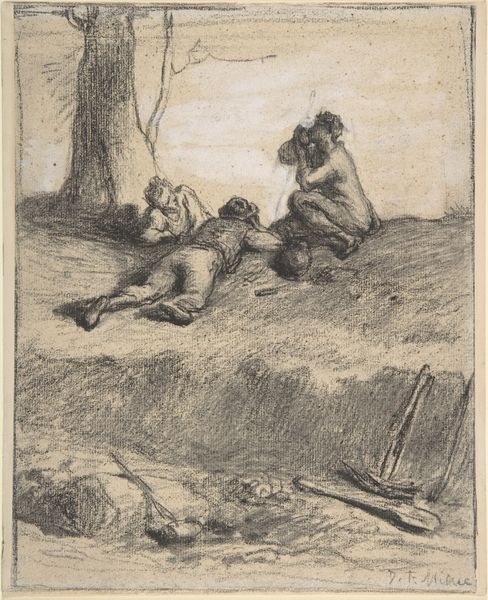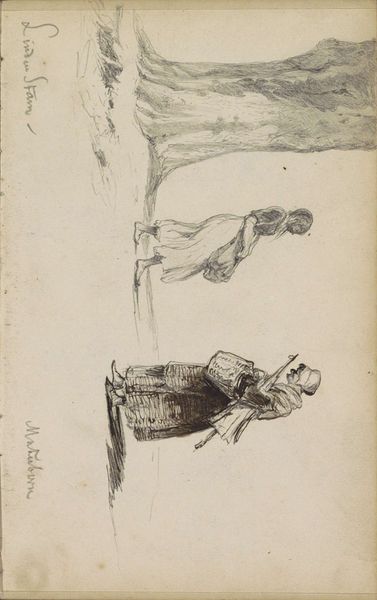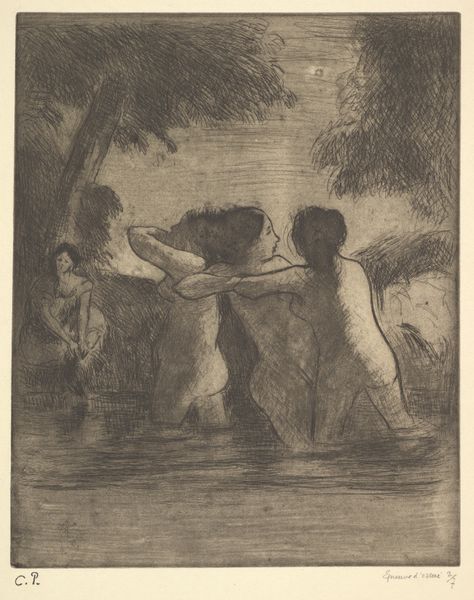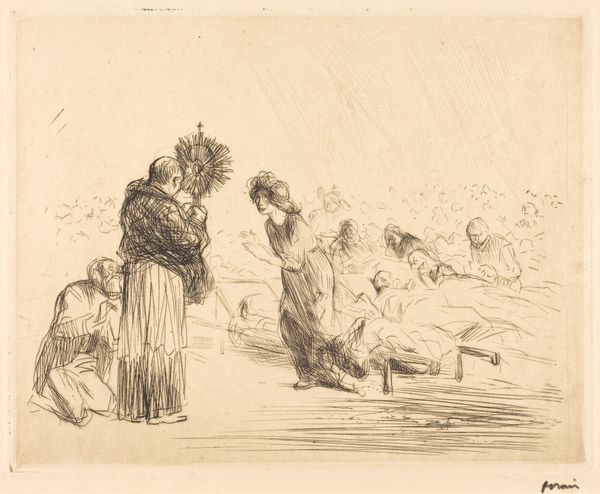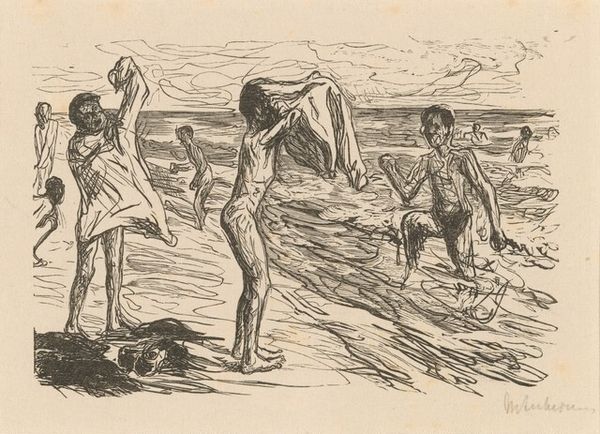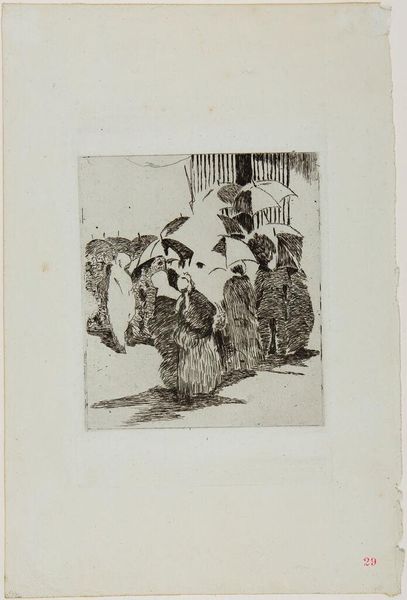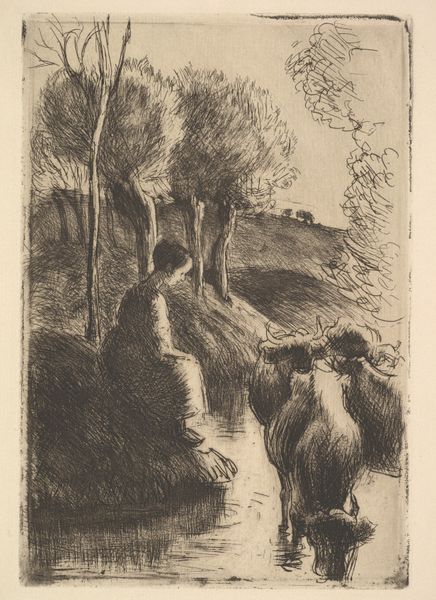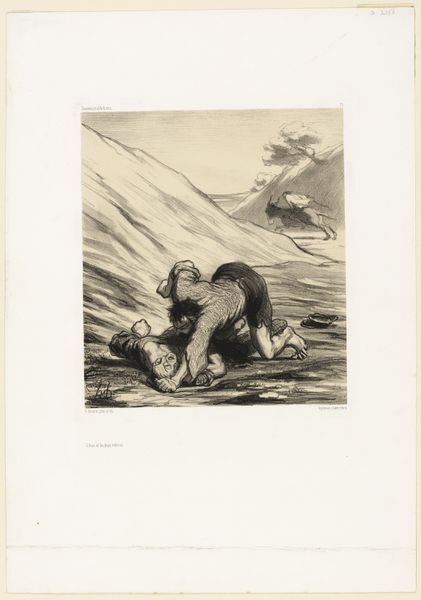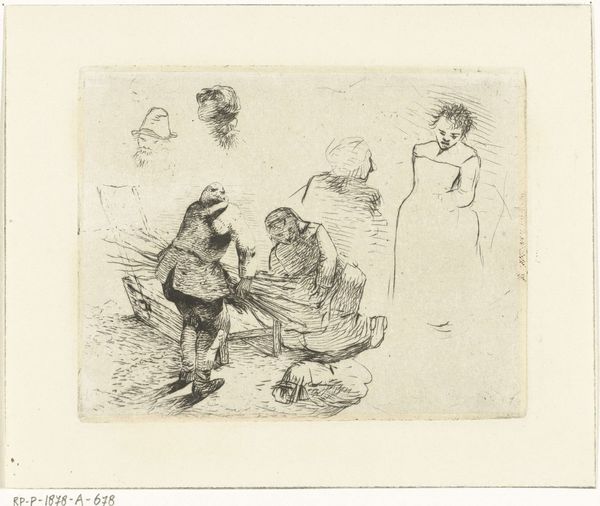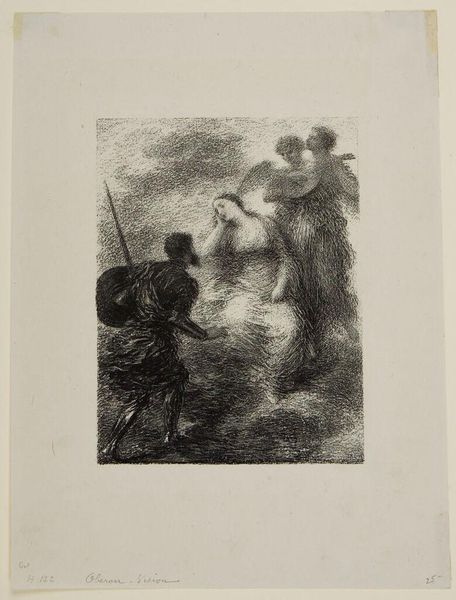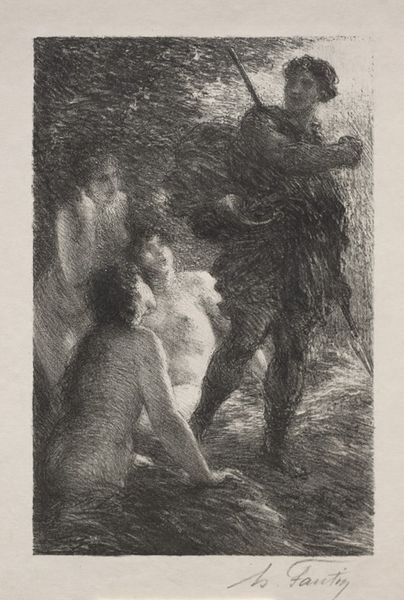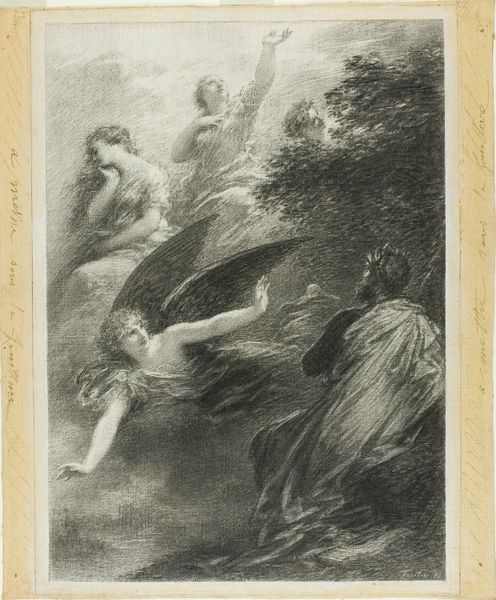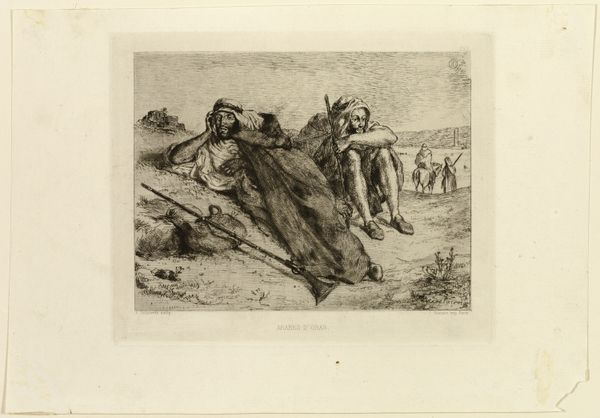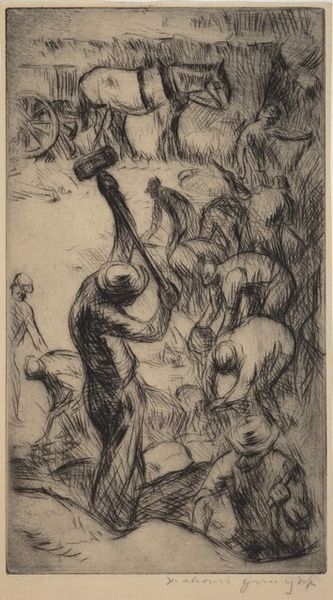
print, etching
#
art-nouveau
# print
#
etching
#
figuration
#
nude
Dimensions: plate: 22 × 16.7 cm (8 11/16 × 6 9/16 in.) sheet: 26.4 × 21.4 cm (10 3/8 × 8 7/16 in.)
Copyright: National Gallery of Art: CC0 1.0
Curator: Here we have Jacques Villon's etching from 1907, titled "Les femmes de Thrace," or "The Women of Thrace." It depicts three female figures in what seems like a moment of frenzied activity. Editor: My initial impression is one of agitation. The stark lines, the seemingly unfinished quality, and the expressive postures of the figures evoke a sense of disquiet and barely contained energy. It almost feels like witnessing a private ritual. Curator: Yes, the art nouveau style evident in the flowing lines and emphasis on natural forms lends itself well to this interpretation. There is a long art historical tradition of portraying Thracian women as figures of Dionysian frenzy and savage ritual, linking them to notions of the "primitive" and irrational, particularly in contrast to the perceived order of ancient Greece. Editor: I notice a small dark object in the foreground—is that a severed head? It's disturbing, but also symbolically loaded, recalling ancient myths of dismemberment and sacrifice associated with ecstatic female cults. The way it grounds the frenetic figures suggests a brutal, earthly reality beneath the surface of the dance. Curator: Indeed. Considering Villon's social context, Paris in the early 20th century, such imagery plays into anxieties around changing gender roles and the perceived threat of female autonomy. The public exhibitions of such art offered a space to debate, negotiate, and even fetishize such social anxieties. Editor: It’s interesting how the nude female form, usually presented as an object of beauty, is here imbued with such unsettling power. The lack of clear definition almost dehumanizes them, making them representatives of a raw, primal force. It’s a far cry from the idealized nudes we often see. Curator: The unfinished quality contributes to this. The lines feel raw, expressive. I wonder to what degree this imagery fed the cultural anxieties surrounding female emancipation, and how its initial reception contrasted to our reading of it now, knowing what we know about the World Wars and the social disruption it incurred. Editor: Reflecting on this work, I see how it serves as a potent reminder that symbols rarely have fixed meanings, they reverberate across history, accumulating new layers of interpretation, reflecting shifting social anxieties and cultural memories. Curator: And it reminds me how art serves as both a mirror and a lens through which we view and interpret the historical moments in which they are created and received, influencing how gender roles are perceived and debated publicly through art and exhibition.
Comments
No comments
Be the first to comment and join the conversation on the ultimate creative platform.
